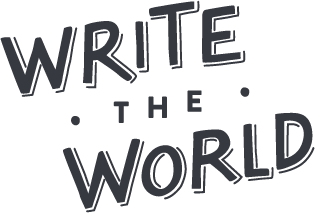by Lisa Hiton

Reading critically can seem demanding in the distracted, digitized time we live in. Reading requires quietude, an absence of screens and sounds, attention, and concentration. Should even another thought interrupt your reading, you may find yourself turning back a page and starting again. And so, when we move to the art of book reviews, our efforts to read well must meet even higher standards. Using the books highlighted in this month’s Reading Like a Writer series, you can learn how to read like a book reviewer—to express your own arguments and attitudes about a book through the craft of writing.
Art of Book Reviewing
The Slippery Art of Book Reviewing by Mayra Calvani and Anne K. Edwards is an essential guide for budding book reviewers. Besides learning the format of a great book review, it is important to learn how to read with a book reviewer’s critical eye. Where a student might read a book to assess, say, sentence and paragraph length in relation to a book’s themes, a book critic would ask further questions that relate those techniques to a reader’s experience of a book— “Does the prose flow smoothly?”, “Are adverbs used too often?”, “Is the language evocative?”. Beyond identifying the techniques used, it is the book reviewer’s job to ascertain if those techniques work together to make a book successful. Successful in this case means that a writer’s techniques create an unbreakable suspension of disbelief in the reader.
But how can reviewers do this swiftly? Calvani and Edwards have many ideas to help emerging reviewers, beginning with how to prepare yourself for a critical reading of a book, such as these reflections on notation below:
Good reviewers usually have a pencil or highlighter in hand to take key notes or mark important lines or passages they may want to refer to later while writing the review. This is especially true in the case of long, in-depth reviews. If you don’t want to write or mark the book, then keeping a notebook for notes is a great idea. You can jot down clue words as you read along, or write down any page numbers you plan to quote from […]
It is human to forget, especially when reading long novels with many characters and subplots and taking notes will keep the information straight and fresh in your mind. You want to make sure you don’t make mistakes about the book or get the facts wrong when writing the review.
(22-23)
Honesty is key to the slippery art of book reviewing. While it may be fun to indulge in your own like or distaste for a book, these opinions must be part of your effort to illuminate what the book does and doesn’t do on its own terms for your readers.

Best Book Review Examples
As you study this new way of thinking critically, take a look at this recent review as a model.
Ironheart by Eve L. Ewing: In Ironheart #1, Ewing gives us Riri Williams—a young superhero whose life in Chicago has shaped her genius, bravery, anxieties, and hopes. As Riri becomes Ironheart and earns her own Marvel storyline, Ewing pushes the boundaries of the traditional superhero by grounding us in Riri Williams’ character—her childhood, her struggles, her passions, her obsessions—and how her sense of character, more than her superpowers, will guide her through whatever adventures and fates befall her life’s journey.
“Riri Williams Soars in Marvel’s Ironheart #1” by Matt Lune: Lune’s review of Ironheart gives potential readers a glimpse of Ewing’s Riri Williams—a young Chicagoan whose technological genius, grit, and heart are as powerful (if not moreso) than anything “super” about her powers.
- What is the reviewer’s attitude about Ironheart? How does that attitude fit into a larger Marvel/comic world?
- Based on the review, what do you hope for in Riri Williams’ characterization? How will her inner superhero manifest?
- Did this review succeed in helping you decide to read Ironheart #1 or not? How/why was the review successful or unsuccessful?
And so, dear writers, as you head into the pages of your favorite book, use these techniques from Calvani and Edwards to slip between your readerly self and your reviewer self. Write on!
About Lisa
Lisa Hiton is an editorial associate at Write the World. She writes two series on our blog: The Write Place where she comments on life as a writer, and Reading like a Writer where she recommends books about writing in different genres. She’s also the interviews editor of Cosmonauts Avenue and the poetry editor of the Adroit Journal.





